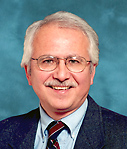Ninety percent of the computer code written nowadays is not for the office, but instead for intelligent machines that operate in places such as factory floors, home kitchens and cars, says A. Galip Ulsoy, professor of mechanical engineering.
Smart devices and products that improve safety and efficiency are becoming ubiquitous and, in Ulsoy’s upcoming Distinguished University Professor lecture, he will discuss some of his contributions to this trend.

Photo by Scott Galvin, U-M Photo Services.
Ulsoy is the C.D. Mote Jr. Distinguished University Professor of Mechanical Engineering and the William Clay Ford Professor of Manufacturing. His talk is at 4 p.m. March 29 in the Rackham Amphitheatre.
Ulsoy develops “mechatronic” devices that utilize mechanical and electrical components as well as software to perform in an intelligent way.
“These machines not only are mechanical in nature but also have sensors, actuators, and decision-making capabilities through onboard computing,” Ulsoy says. “We’ve incorporated basic knowledge about how the systems operate dynamically so that we can avoid doing things by trial and error.”
Ulsoy has worked on the design of smarter automotive belts and better drilling systems with applications in manufacturing. He also has been involved in developing “electronic rumble strips” that warn drivers when they’re about to veer off the road. Such systems are used in some trucks today, and some aspects are showing up in new cars as “vehicle stability control systems” that help to prevent spin-outs after severe maneuvers, Ulsoy says.
Among his current projects, Ulsoy is improving the “stamping” manufacturing process used to form large parts. Wrinkling and tearing can occur during stamping. Ulsoy’s smarter method identifies problem points and varies the flow of metal there in order to avoid those complications.
Ulsoy also is creating a method for designing smarter products. It involves designing the controller and the part it will control at the same time. This currently isn’t common practice.
“Traditionally, you might design an engine and then add to it an engine controller,” Ulsoy says. “But if you design them both at the same time, as a complete system, you can get better performance.”
All this is the tip of the mechatronic iceberg, Ulsoy says.
“None of this stuff existed 30 years ago when I entered the field,” he says. “Probably in 10 or 20 years, we’ll be talking about autonomous systems that can operate and make decisions by themselves. Eventually, we could have ‘conscious’ systems that can diagnose, assemble and replicate themselves.”

